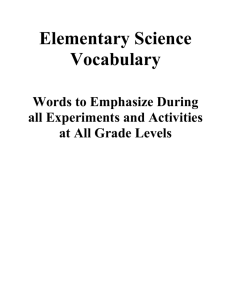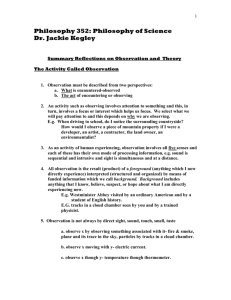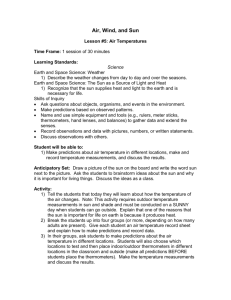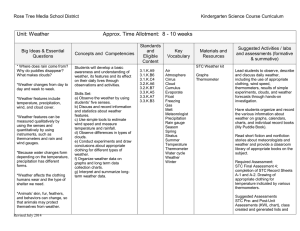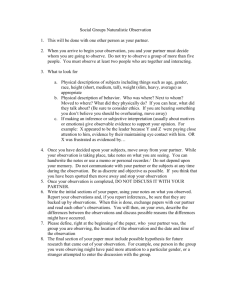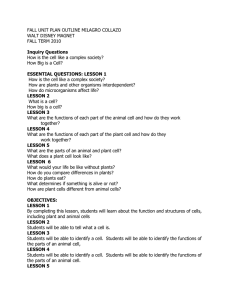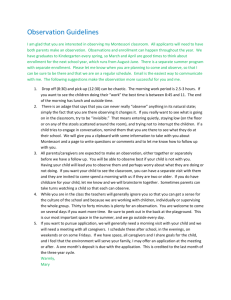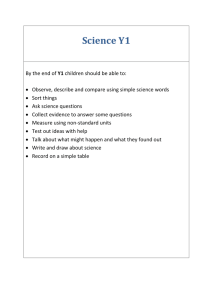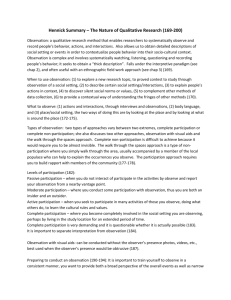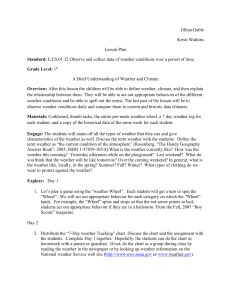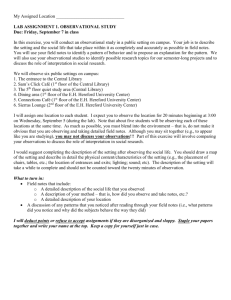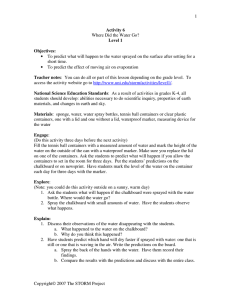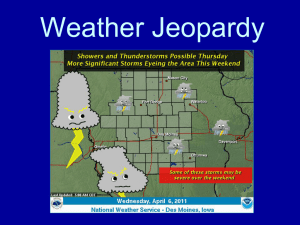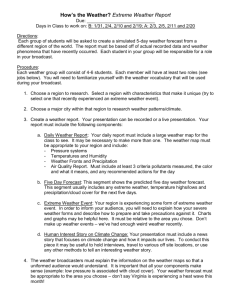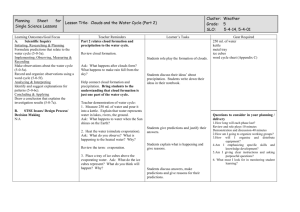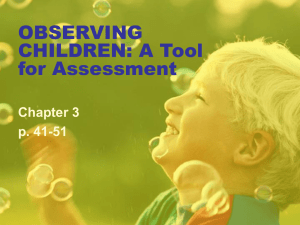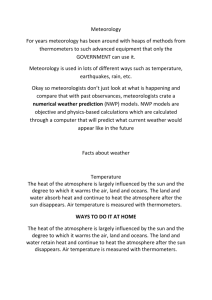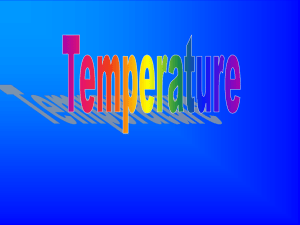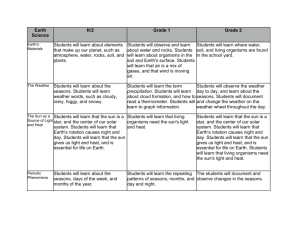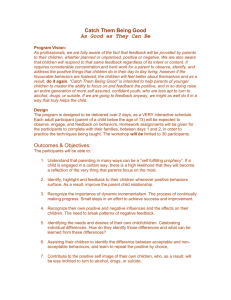Weather
advertisement
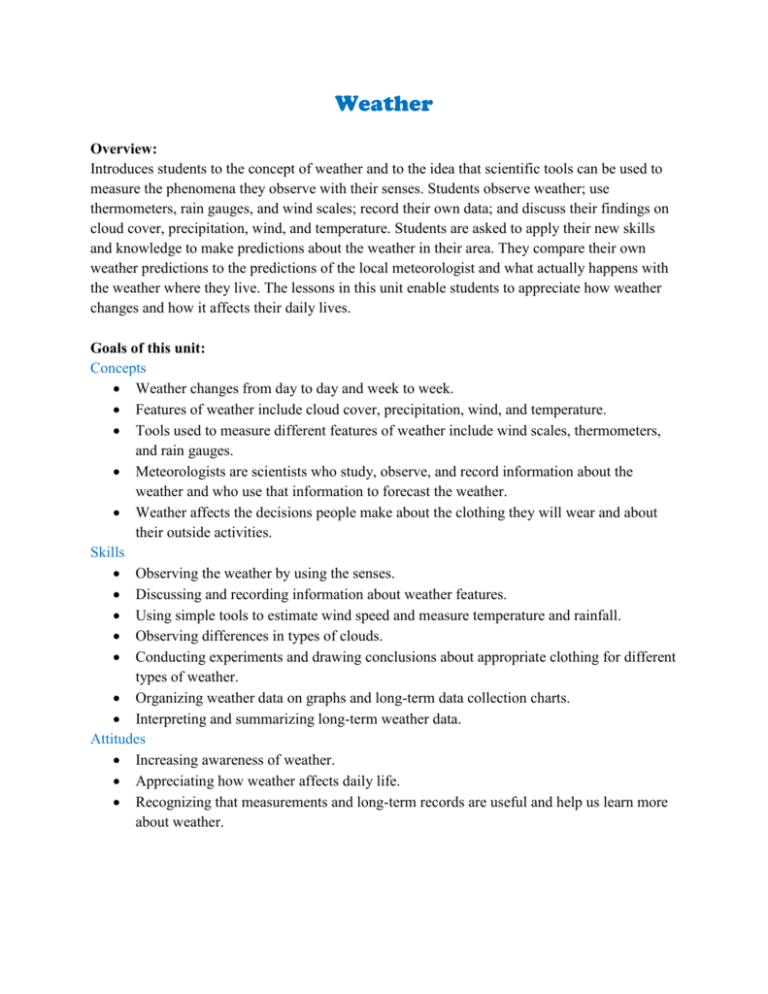
Weather Overview: Introduces students to the concept of weather and to the idea that scientific tools can be used to measure the phenomena they observe with their senses. Students observe weather; use thermometers, rain gauges, and wind scales; record their own data; and discuss their findings on cloud cover, precipitation, wind, and temperature. Students are asked to apply their new skills and knowledge to make predictions about the weather in their area. They compare their own weather predictions to the predictions of the local meteorologist and what actually happens with the weather where they live. The lessons in this unit enable students to appreciate how weather changes and how it affects their daily lives. Goals of this unit: Concepts Weather changes from day to day and week to week. Features of weather include cloud cover, precipitation, wind, and temperature. Tools used to measure different features of weather include wind scales, thermometers, and rain gauges. Meteorologists are scientists who study, observe, and record information about the weather and who use that information to forecast the weather. Weather affects the decisions people make about the clothing they will wear and about their outside activities. Skills Observing the weather by using the senses. Discussing and recording information about weather features. Using simple tools to estimate wind speed and measure temperature and rainfall. Observing differences in types of clouds. Conducting experiments and drawing conclusions about appropriate clothing for different types of weather. Organizing weather data on graphs and long-term data collection charts. Interpreting and summarizing long-term weather data. Attitudes Increasing awareness of weather. Appreciating how weather affects daily life. Recognizing that measurements and long-term records are useful and help us learn more about weather.
